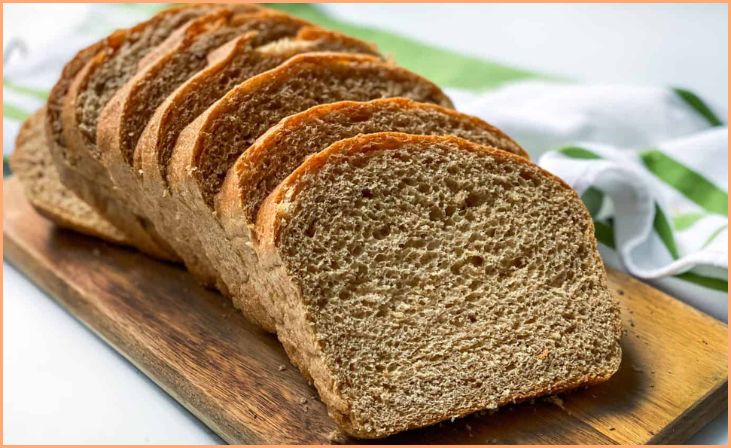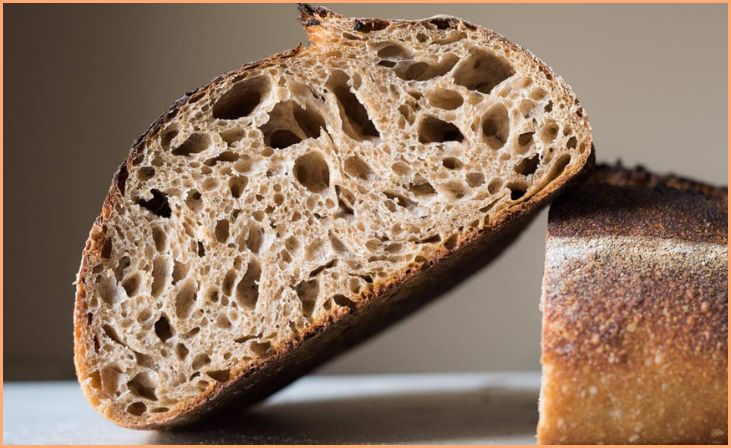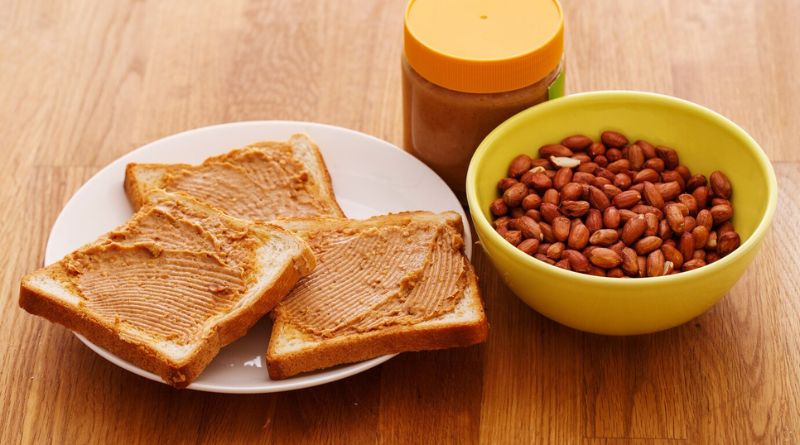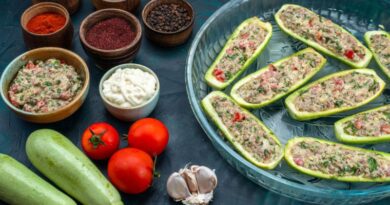When it comes to comfort food, bread is a timeless companion to our daily meals. From the soft and fluffy to the hearty and nutty, American breads come in a variety of flavors and textures that cater to different palates. Here’s a list of ten popular American breads that make their way to kitchen tables and restaurants across the country.
Must Try American Breads
Exploring American bread varieties unveils a diverse range of delicious options worth sampling.
1. White Bread
White bread’s widespread popularity in American homes stems from its distinctive qualities. With its soft and airy texture coupled with a subtle, comforting taste, this bread variety stands as a versatile staple in numerous culinary applications. Its mild flavor serves as an ideal canvas for a myriad of creations, from the quintessential peanut butter and jelly sandwiches to the heartwarming simplicity of toast.
The versatility of white bread shines through its ability to adapt to various dishes, elevating the classic grilled cheese or providing the perfect base for a traditional French toast. Its gentle taste and soft consistency seamlessly blend with diverse flavors and ingredients, making it an ever-present fixture in the American kitchen.
Read Also: Comparison Between Ham Shank Vs Ham Hock
2. Whole Wheat Bread

Whole wheat bread distinguishes itself with its robust and earthy flavor, setting it apart from the milder taste of white bread. Its inherent richness stems from the inclusion of the whole grain, encompassing the bran, germ, and endosperm, resulting in a heartier and nuttier taste profile. This characteristic essence resonates with those seeking a more substantial and wholesome bread option.
Moreover, whole wheat bread emerges as a nutritional powerhouse. Its composition brims with dietary fiber, essential vitamins like B vitamins, and minerals such as magnesium and iron. This nutrient density not only satiates hunger but also contributes to overall well-being by promoting digestive health, aiding in nutrient absorption, and supporting bodily functions.
3. Multigrain Bread
Multigrain bread embodies a harmonious blend of diverse grains and seeds, offering a palate-enriching medley of flavors and textures. This bread variety stands out as a wholesome option, crafted from a combination of grains like wheat, barley, oats, and an assortment of seeds. The amalgamation of these ingredients results in a bread that boasts a rich tapestry of tastes, each grain contributing its distinct essence to the final product.
What distinguishes multigrain bread is its delightful complexity. The amalgamation of grains and seeds brings forth a mosaic of textures, ranging from the hearty crunch of seeds to the comforting chewiness of various grains. This variety in textures appeals to individuals seeking a more diverse and engaging bread-eating experience.
4. Rye Bread
Rye bread makes a mark with its unmistakable flavor profile and denser texture, setting it apart from other bread varieties. Its distinctive taste, characterized by a slightly tangy and earthy essence, adds a unique dimension to the bread-eating experience. Moreover, the denser texture of rye bread contributes to its robust and satisfying bite, appealing to those seeking heartier bread options.
One of the notable features of rye bread is its versatility in culinary applications. Its robust flavor and sturdier structure make it an ideal candidate for crafting hearty sandwiches. Whether toasted or untoasted, rye bread serves as a delightful canvas for an array of spreads, offering a perfect complement to various flavors.
5. Sourdough Bread

Sourdough bread owes its distinct character, marked by a tangy flavor and a chewy texture, to the natural fermentation process it undergoes. This process involves a symbiotic culture of yeast and bacteria, creating the distinctive taste profile that sets sourdough apart. The prolonged fermentation gives rise to its tanginess, adding depth and complexity to its flavor profile. Furthermore, this fermentation process contributes to the bread’s chewy texture, making each bite a delightful experience.
The versatility of sourdough bread is evident in its wide range of culinary applications. Whether enjoyed on its own with a layer of spreads like butter or jam, or used as the foundation for specialty sandwiches, sourdough bread stands as a versatile choice. Its tangy notes complement various spreads and toppings, enhancing the overall flavor profile of any dish it accompanies.
6. Bagels
Bagels, with their distinctive New York-style essence, add a touch of charm to breakfast tables nationwide. These iconic, ring-shaped delights boast a unique preparation method that involves boiling them before baking. This process imparts a chewy and slightly dense texture, setting them apart from other bread varieties and adding to their irresistible appeal.
The characteristic chewiness of bagels, attributed to their boiling method, contributes to their allure. This texture creates a satisfying bite that stands as a perfect complement to various spreads, toppings, or fillings. Whether slathered with cream cheese, adorned with smoked salmon, or transformed into a breakfast sandwich with eggs and bacon, the chewy texture of a bagel serves as an ideal base for an array of flavors.
7. Ciabatta
Ciabatta, an Italian bread, boasts a rustic aesthetic characterized by its irregular shape, crispy crust, and an airy, hole-filled interior. Its visual appeal mirrors the artisanal craft behind its creation, offering a charming allure to those seeking a bread with character.
The distinctive qualities of ciabatta extend beyond its appearance. Its crust, often crunchy and golden, encapsulates a delightful contrast to the soft and porous crumb within. This inner texture, characterized by a web of irregular air pockets, contributes to its light and airy consistency, setting it apart from denser bread varieties.
8. Cornbread
Cornbread stands as a cherished cornerstone of Southern cuisine, revered for its presence alongside a variety of flavorful dishes. Its significance lies in its ability to complement and enhance meals, often serving as a delightful accompaniment to Southern classics like chili, barbecued meats, and hearty sides.
One of the defining characteristics of cornbread is its versatile texture, ranging from crumbly to moist, catering to varying preferences. This diversity in texture adds to its allure, allowing it to seamlessly adapt to different culinary presentations and dining experiences. Its distinct corn flavor, derived from the use of cornmeal in its preparation, adds a unique and comforting essence to every bite.
9. Biscuits

Biscuits, a beloved quick bread in American breakfast culture, bring a sense of warmth and comfort to the morning table. These delights, renowned for their fluffy and buttery goodness, hold a special place as a quintessential breakfast addition.
Their versatility stands out as one of their defining qualities. Whether paired with savory gravy, creating the classic Southern dish of biscuits and gravy, or serving as a versatile base for breakfast sandwiches filled with eggs, bacon, or sausage, biscuits showcase their adaptability to various culinary roles. Moreover, their ability to stand alone as a delightful side dish, often accompanied by butter or jam, emphasizes their appeal as a standalone breakfast treat.
Read Also: How To Make Lefse: An Ideal Flatbread For Christmas!
10. Cinnamon Raisin Bread

Cinnamon raisin bread stands out for its harmonious fusion of sweetness and comforting spices. The addition of flavorful cinnamon and plump raisins to this delightful bread variation gives it a rich and complex flavor profile.
The marriage of raisins and cinnamon within the bread dough creates an enticing symphony of taste and aroma. The natural sweetness of raisins, paired with the warm and fragrant notes of cinnamon, delivers a sensory experience that is both comforting and inviting.
This bread’s versatility shines through its ability to serve as a perfect canvas for toasting. When toasted, the flavors intensify, and the bread’s inherent sweetness is heightened, making it a delightful treat when adorned with a simple pat of butter.
Bottom Line
Incorporating these bread varieties into daily meals adds a sense of warmth and familiarity to the dining experience. Whether you’re savoring the nuttiness of whole wheat, the tang of sourdough, or the sweetness of cinnamon raisin, each bread brings a unique element to the table.
American breads play a significant role in everyday cuisine, offering a diverse array of flavors and textures that cater to various preferences. From the classic white bread’s softness to the heartiness of whole wheat or the rich taste of cinnamon raisin, these breads have secured their place on daily tables across the nation. Their versatility in sandwiches, toasting, and as accompaniments to various dishes showcases their integral role in American households, providing comfort and satisfaction in every bite.
FAQs
American households commonly enjoy a variety of bread, with popular choices including white bread, whole wheat bread, sourdough, multigrain, rye, pumpernickel, ciabatta, bagels, English muffins, and cornbread.
Whole wheat bread is often considered a healthier option due to its higher fiber content and nutrients compared to white bread. However, the healthiest choice can vary based on individual dietary needs and preferences.
Yes, bagels are a staple in many American households, especially in regions with a strong Jewish influence like New York. They’re frequently consumed for breakfast or as a sandwich base.
Sourdough is unique due to its fermentation process using wild yeast and lactobacilli bacteria, giving it a distinct tangy flavor and characteristic texture. It’s often favored for its taste and potential health benefits related to gut health.
Yes, many of these bread types have gluten-free alternatives available in stores or through specialized bakeries. Gluten-free versions of white bread, whole wheat bread, bagels, and others cater to individuals with gluten intolerance or celiac disease.







